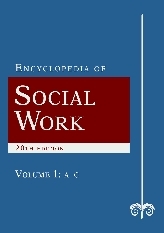Gentrification
Item
Title
Gentrification
Link
https://oxfordre.com/socialwork/view/10.1093/acrefore/9780199975839.001.0001/acrefore-9780199975839-e-1413
List of Authors
Amy Krings
Abstract
Gentrification can be understood as the process through which geographical areas become increasingly exclusive (Choi, 2016). This process disproportionately harms people living in poverty and people of color, most notably the elderly, families, and youth. Gentrification’s many negative consequences include residential displacement and increased economic precarity, reduced social ties among neighbors, marginalization of long-term residents’ preferences relating to their community, and worsened mental and physical health of long-term residents. Importantly, gentrification is not inevitable, nor is it uncontested. Under some conditions, residents and civic groups can resist gentrification by supporting development that benefits long-term residents through economic improvements and investments. It is critical for all social work practitioners to have a foundational understanding of what constitutes gentrification, what causes this form of neighborhood change, and what are its varied effects on social needs, inequalities, and human well-being. There is a particular need for macro social workers to help community groups identify, implement, and evaluate strategies to intervene in gentrifying neighborhoods.
This article first defines gentrification, distinguishes gentrification from revitalization, and describes methods used to measure gentrification. It then examines gentrification’s varied causes, with particular attention to the relationship between systemic racism and gentrification. The article goes on to explore gentrification’s consequences to individuals’ and communities’ well-being. It finally describes macro strategies for preventing gentrification, mitigating its harms, and working proactively to advance community well-being in areas vulnerable to gentrification. Although gentrification is a global phenomenon, its form, function, and possible transformation are heavily shaped by national, state, and local socioeconomic and political contexts. This article is focused on understanding and addressing gentrification in the context of the United States.
This article first defines gentrification, distinguishes gentrification from revitalization, and describes methods used to measure gentrification. It then examines gentrification’s varied causes, with particular attention to the relationship between systemic racism and gentrification. The article goes on to explore gentrification’s consequences to individuals’ and communities’ well-being. It finally describes macro strategies for preventing gentrification, mitigating its harms, and working proactively to advance community well-being in areas vulnerable to gentrification. Although gentrification is a global phenomenon, its form, function, and possible transformation are heavily shaped by national, state, and local socioeconomic and political contexts. This article is focused on understanding and addressing gentrification in the context of the United States.
Date
November 29, 2021
Publication Title
Encyclopedia of Social Work
Publisher
Oxford University Press
Identifier
https://doi.org/10.1093/acrefore/9780199975839.013.1413
Bibliographic Citation
Thurber, A., & Krings, A. (2021). Gentrification. In Encyclopedia of Social Work. Oxford University Press. https://oxfordre.com/socialwork/view/10.1093/acrefore/9780199975839.001.0001/acrefore-9780199975839-e-1413
